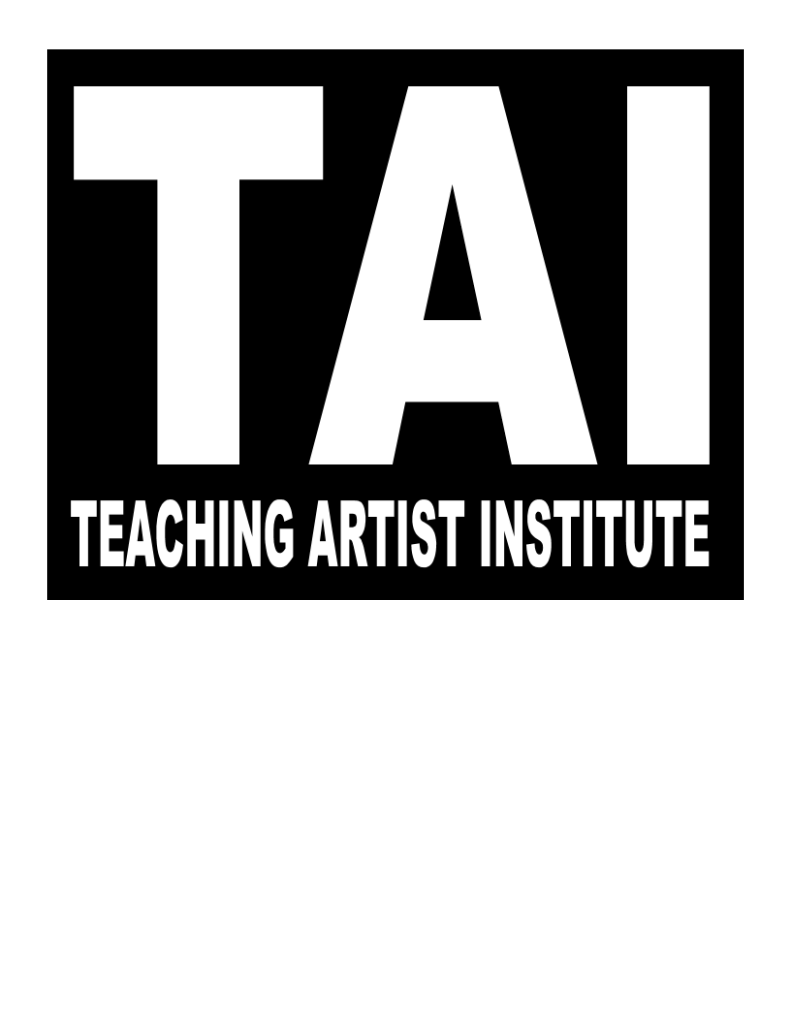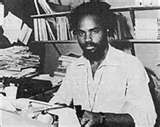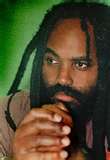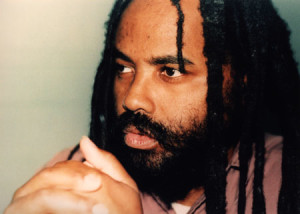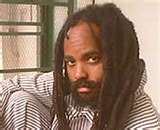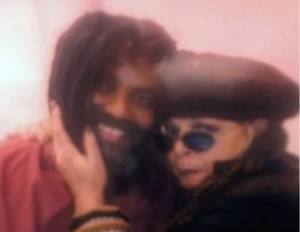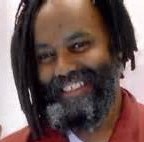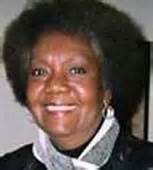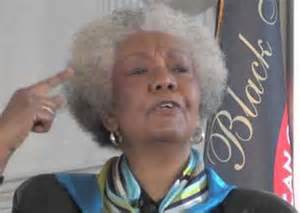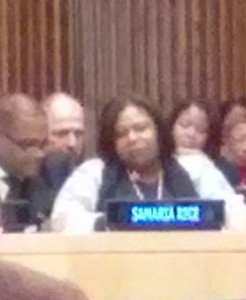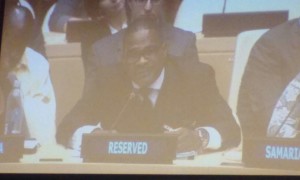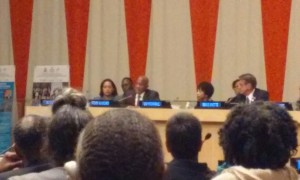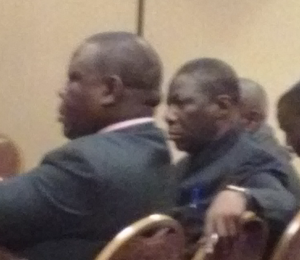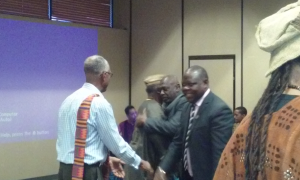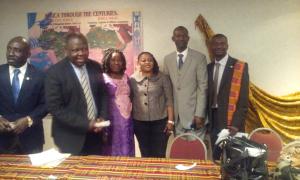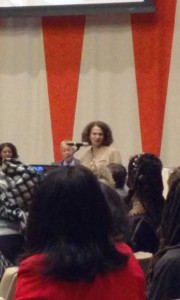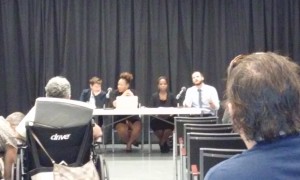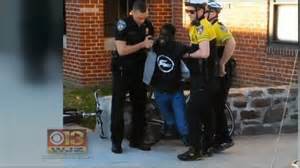
The Africa Braintrust was held on Friday, September 18, the closing day of the 2015 Congressional Black Caucus week of meetings, addresses and panels. The annual Braintrust, sponsored by a variety of corporate and organizational donors and organized by US Congress Member Karen Bass (Democrat from Southern California), includes a variety of panel discussions that focus on US policy toward the Continent of Africa, as well as discussion of many of the challenges that still face the Continent. The discussions usually center on issues of economic development, peace and Security, the rule of law and health concerns on the Continent. In this article, we will share with you the remarks made by the two featured Keynote Speakers, Assistant Secretary of State for African Affairs Linda Thomas-Greenfield (morning keynote) and National Security Advisor Susan E. Rice (afternoon keynote).
LINDA THOMAS-GREENFIELD
Assistant Secretary of State for African Affairs
Morning Keynote
Ambassador Linda Thomas-Greenfield, a member of the Career Foreign Service, was sworn in on August 6, 2013 as the Assistant Secretary for the Bureau on African Affairs. In this capacity, she leads the bureau in the Department of State focused on the development and management of US policy toward Sub Saharan Africa. Prior to this appointment, she served as Director General of the Foreign Service and Director of Human Resources (2012-2013) for the State Department.
Her 32-year Foreign Service career includes an ambassadorship to Liberia (2008-2010), and foreign postings in Switzerland (at the US Mission to the United Nations), Pakistan, Kenya, The Gambia, Nigeria, and Jamaica. In addition to the Bureau of Human Resources, her Washington postings include the Bureau of African Affairs (2006-2008), where she served as Principal Deputy Assistant Secretary, and the Bureau of Population, Refugees and Migration (2004-2006) where she served as Deputy Assistant Secretary.
Prior to joining the Department of State, she taught Political Science at Bucknell University in Pennsylvania. (from the brief bio in the Africa Braintrust Program)
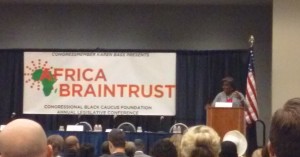
We entered the hall while Ms. Greenfield (pictured, right) was already delivering her speech, but the following represent what we were able to hear of her statement. At the time of our arrival, she was remarking on President Obama’s trip to Kenya and to the Global Entrepreneurship Summit, which she said primarily served the important purpose of giving business people “the opportunity to see Africa at its best.”
He was the “first US President to address the African Union. … If you were in that room you felt the heartbeats of every person in that room as he walked onto that stage, and then the excitement as he delivered his historic speech.”
“I am very optimistic about Africa’s future and the opportunities that are being presented to us as we move forward. President Obama said while we were in Nairobi, ‘Africa is on the move.’ That’s my new motto. Africa is on the move. Now we must focus on what we must do, together, all of you, to keep Africa moving forward. … Africa’s population in the coming decades will double to 2 billion people, and many of them will be under the age of 18. This beings great opportunities but it also provides significant challenges that we will all have to face.”
She praised YALI (the Young African Leaders Initiative) for building leadership skills in young Africans. “If they are not encouraged to lead for good, they will lead for bad.” On charges that “we were brainwashing them to be supporters of the US”, she responded “Who was questioning what Boko Haram was doing to the young people across the Continent of Africa? Who was talking to ISIL to find out what they are doing to support young people across Africa to lead for bad? So we have to give young people the tools they need, the skills they require, the resources they require to lead for good on the Continent of Africa.”
She listed several goals the US has for sustaining progress and generating new opportunities in Afrika: Promote strong democratic institutions with free and fair elections; Increase economic growth and trade; and Build peace and security. She expounded on several more specific subjects:
Democratic institutions: She mentioned the “success” of Nigeria’s presidential election because people voted and candidates respected the results. “President Jonathan surprised us … and he will go down in history and leave a legacy across Africa for that decision.” Still, she pointed out that there are still presidents who refuse to leave office, such as in Burundi, and coups against elected leaders as happened in Burkina Faso. President Obama has stated that civil society organizations (CSOs) play “a critical role” in maintaining democracy, and that governments need to allow CSOs to function in Africa.
Health Infrastructure: “Not just to deal with Ebola … Malaria [and] HIV” but to deal with all the health issues the people struggle with. Much is not known about what happened to people aside from Ebola as the fight against Ebola was moving forward. She promoted the idea of “an African CDC”. Two weeks ago, the World Health Organization (WHO) declared Liberia Ebola-free “but we have to remain ever vigilant.”
Economic growth, trade and development: “We want to diversify and expand US-Africa trade”, so Africans can get more of their goods to market. “AGOA [Africa Growth and Opportunity Act] is at the heart of our strategy for increasing US-Africa trade and investment.” She also promoted the Power Africa Initiative.
Peace and Security: Ambassador Greenfield made note of Al Shabbab (Somalia), the Lords Resistance Army (Uganda) And Boko Haram (Nigeria) as well as “millions of South Sudanese suffering from crises of their own leaders’ creation.” She expressed guarded hope that South Sudan’s leaders will abide by a recent peace agreement.
She concluded, “There’s a role for all of us, for all of you, in working for peace and prosperity for the Continent, and for enabling those young Africans to propel Africa forward, so that their children will have peace and prosperity in the future. Thank you very much.”
SUSAN E. RICE
National Security Advisor
Afternoon Keynote
From January 2009 until assuming the role of National Security Advisor in July 2013, Ambassador Rice served as the US Permanent Representative to the United Nations and a member of President Obama’s Cabinet. Under Ambassador Rice’s leadership, the US Mission to the United Nations helped win the stiffest UN sanctions ever against Iran and North Korea to prevent the proliferation of nuclear weapons and materials, supported interventions in Libya and Cote D’Ivoire, helped build the referendum on the independence of South Sudan, worked to reform the UN Human Rights Council and helped rebuild a strong basis for international cooperation, among other accomplishments.
Prior to serving as US Permanent Representative to the UN, she served as Senior Advisor for National Security Affairs on the Obama for America Campaign. She later served on the Advisory Board for the Obama-Biden Transition and as co-chair of its policy working group on national security. From 2002-2009, she was a senior fellow at the Brookings Institution, where she focused on US foreign policy, transnational security threats, weak states, global poverty and development.
From 1997 to 2001, she was the US Assistant Secretary of State fort African Affairs, when she formulated and implemented US policy for 48 countries in Sub Saharan Africa and oversaw the development of 43 US Embassies and more than 5,000 US Foreign Service national employees. From 1995-1997, she served as Special Assistant to President Bill Clinton and as Senior Director of African Affairs at the National Security Council of the White House. From 1993-1995, she served as the Director for International Organizations and Peacekeeping on the National Security Council staff. Previously, she was a management consultant with McKinsey and Company and also served on numerous boards, including the National Democratic Institute and the US Fund for UNICEF. (from the brief bio in the Africa Braintrust Program)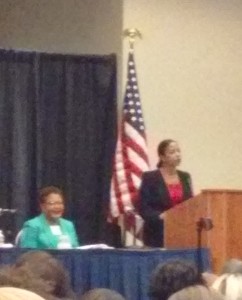
Congress Member Karen Bass (pictured, left, at the table) introduced Ms. Rice (pictured, left, at the podium) as “a woman of distinction.” Ms. Rice’s talk concentrated on the issues of economic growth, peace and security, building the health infrastructure and training future African leaders. Her speech is detailed below.
Ms. Rice thanked Congress Member Bass, Rep. Butterfield and the leadership of the Congressional Black Caucus (CBC). She paid special tribute to the late Congressman Donald Payne, “Mr. Africa, [who] reinvent America’s relationship to the Continent.” Through his leadership, she “saw first-hand the power of the CBC’s unwavering insistence that Africa receive the same consideration as any other region of the world.” She credited Ms. Bass and the CBC for helping to build “a bipartisan consensus that gets things done for Africa, from fighting apartheid to supporting PEPFAR, from confronting the genocide in Darfur and easing the suffering of the people of South Sudan to tackling the Ebola crisis in West Africa. So when President Obama made his fourth visit to Sub Saharan Africa this summer, and a first ever by a sitting American President to Kenya, to Ethiopia and to the African Union, he was grateful to be joined by 16 members of the CBC.
“And everywhere he went, he met inspiring Africans working for change in their communities, sometimes against incredible odds. They were entrepreneurs bringing solar panels to villages not connected to the electrical grid, so the families have light to read by. They are women participating in the civic life of their country and fighting for the right of girls to be educated. They’re religions leaders opposing radical ideologies and standing up for the peaceful teachings of Islam. In President Obama the people of Africa and everyone here today have a leader who understands, in his words and I quote, ‘Africa’s rise is not just important for Africa. It’s important for the entire world.’ As he made clear, none of our major challenges globally, curbing climate change, promoting inclusive economic growth, ending violent extremism, can be met without the voices and contributions of one billion Africans. That’s why, when President Obama hosted the first ever African Leaders’ Summit, here in Washington last summer, he focused on strengthening our partnerships across the Continent to achieve our shared goals for the future. No longer do we view Africa through the prism of poverty and crisis. We see Africa for what it is, a dynamic diverse region, brimming with economic potential and boundless possibility. Africans are driving their own development, building their own capacity to feed and care for their people, and doing more to prevent and resolve African conflicts. Accordingly, the United States has stepped up our commitments to Africa across the board.
“Yet, at the same time as we all know, serious challenges threaten to undermine Africa’s progress. In his remarks to the African Union, President Obama said that, quite, ‘The most urgent task facing Africa today, and for decades ahead, is to create opportunity for this next generation.’ Today I’d like to speak about the steps we’re taking in partnership with Africa, to help create that opportunity by spurring economic growth that is inclusive, by fostering development, advancing peace and stability, and investing in Africa’s future.
Economic Growth
“First, we’re fully committed to driving economic growth across Africa. As President Obama declared in Kenya, ‘Africa is on the move.’ Poverty rates are going down. The middle class is growing. From Ethiopia to Cote D’Ivoire to Mozambique, Africa has some of the fastest growing economies in the world. But we haven’t fully tapped this potential. Trade between Africa and the United States is far below where it should be. In 2013, total trade between the US and all 49 countries of Sub Saharan Africa was only a little larger than our trade with The Netherlands. So we’re taking steps to increase trade and investment with Africa, which supports jobs and growth in all of our countries. One of the most effective tools we have in this mission is AGOA, the Africa Growth and Opportunity Act. I confess this is a piece of legislation close to my heart. I was deeply involved in the original passage of AGOA and I want to thank Congress Member Bass and the CBC for backing the ten year renewal that Congress passed this summer. This strong evidence of America’s long term commitment to Africa will help spur sustained investment in the next ten years and well beyond. And American businesses are eager to invest in Africa. The first US-Africa Business Forum, held last year, was such a success, generating $33 billion in new commitments, that President Obama announced a second Forum to be held here next year. Through our Doing Business in Africa Campaign, we’re working across the government to make it easier for American companies to strengthen their commercial ties to Africa, and through Trade Africa, we’re working with African governments to improve the business environment and remove barriers to trade. With Power Africa, we’ve made a game changing commitment to double access to electricity across Sub Saharan Africa. Expanding access to power is one of the first ways we can support African businesses, which in turn unlocks more growth and more trade. Bit this isn’t like just flipping a switch. Power plants and electrical infrastructure take time to build and bring online. Like all bold ideas, successive administrations will have to carry this project forward. We’re well on our way with new Power Africa projects slated to generate more than 20,000 megawatts of electricity. We’re bringing down barriers to greater investment in Africa’s energy sector, and have already facilitated deals that will create an estimated four million new power connections. Entrepreneurship is the spark igniting Africa’s growth, and we’re directly supporting Africa’s dynamic entrepreneurs, nurturing their ideas, and connecting them to resources. At this year’s Global Entrepreneurship Summit, in Nairobi, President Obama announced more than $1 billion in new funding from the US government and the private sector to support entrepreneurs, much of it focused on Africa. Beyond that, we’re investing in women and young people, and entrepreneurs who have the hardest time accessing financing and business networks.
“Second, a commitment to maximizing commitment and delivery results is essential to this Administration’s approach to development. In Africa, too many people, as you well know, still live in extreme poverty, eking out meager livings with their bare hands and sheer determination. Empowering Africa’s most vulnerable is a cornerstone of our commitment to the region. President Obama’s consistent focus has been on helping our development partners become self-sufficient. Today, African countries are setting their own priorities. We build our programs around African plans.
“And even as we continue to provide generous humanitarian relief in Africa and around the world, we move far beyond simply responding to the latest crisis. For example, we’re helping more than 40 African countries build their resistance to climate change now, before vulnerable communities have to face its worst impacts. Through President Obama’s Feed the Future Initiative, we’re making sure smallholder farmers can both deed their families and sell their harvests at market. Since 2010, we’ve invested more than $5.5 billion to improve food security in Africa and other regions. In the past year, Feed the Future has helped nearly 2.5 million African farmers raise their incomes by using new technologies and mans management practices. Our nutrition programs have helped nearly 9 million African children get the nourishment they need to grow and thrive. And we hope to see Feed the Future institutionalized so that it continues to transform lives after President Obama leaves office.”
Health Systems
“Of course, no one can succeed if they’re too sick to work. So with our partners, we’ve developed country-led plans to build mobile health systems, and to reduce several preventable diseases. We’re helping mothers and children become healthier, and making labor and delivery safer. And we’ve been slowly making progress against HIV and AIDS, bringing us within striking distance of an AIDS-free generation. Together with more than 45 countries, we wrote a mobile health security agenda to improve our ability to prevent and contain … epidemics like Ebola. Think back to this time last year, when Ebola was spiraling out of control, weak health systems buckling under the strain. But thanks to the heroism of all the responders on the ground, the leadership of Liberia, Guinea and Sierra Leone, the American support to galvanize a massive international response, we have brought the disease under control. As of last week, there were only five cases, and we will not stop until we get to zero.
Peace and Security
“In our interconnected age, outbreaks of diseases, or violence, or instability are no longer local concerns. They threaten entire regions, and undermine global economic security. So the third area I want to discuss is how we’re advancing peace and stability across Africa. I was honored to be President Obama’s personal representative at the joyous independence celebrations in Juba, South Sudan just over four years ago. So for me, like so many of us, South Sudan’s return to violence has been heart-wrenching. That’s why President Obama convened an urgent summit with regional leaders in Ethiopia when he was there in July. And in no small part due to President Obama’s personal leadership, shortly after that meeting, regional leaders finally united behind a draft peace agreement. A few weeks later, South Sudan’s leaders signed the agreement. This is an essential first step. But the true test will bow be in how President Kiir, Riek Machar and their backers prove or disprove their commitment to peace. At long last, they must prioritize the needs of the South Sudanese people, almost half of whom are dependent on international aid for survival … and as they do, the United States stands ready to help the people of South Sudan achieve the lasting peace they deserve.
“In Darfur, the war crimes continue. We’re working to end the horrible conflict by strengthening our positioned parties and building a national dialog that could, if implemented, improve the way Sudan is governed.
“In Burundi, we’re working with our partners to dispense assistance, and supporting efforts by the East African Community, the African Union and the United Nations to broker an end to the crisis.
“The United States and the international community are uniting today in responding to the crisis in Burkina Faso. The junta should step aside and allow preparations for October elections to resume immediately. The United States stands squarely with the people of Burkina Faso, in rejecting this threat to their democratic progress for which they have worked so hard. We are reviewing our assistance to Burkina Faso in light of evolving events. [The junta in Burkina Faso recently vowed to pressure from the AU and announced it would relinquish power to allow the election process to continue — Ed.]
“Under President Obama the United States has significantly increased our efforts to bolster peacekeeping capacity in Africa. In the African Peacekeeping Rapid Response Partnership, we’re committing more than $100 million a year, for the next several years, to help our partners with all their capabilities, including … medical expertise, to deploy rapid response forces to prevent conflicts and save lives. We are facing down the growing terrorist threat. In Somalia, we continue to provide training, equipment … to support the African Union’s mission to root our Al Shabbab and strengthen Somalia’s security institutions. In the fight against Boko Haram, we’re increasingly providing specialized advisers, training, equipment and intelligence support to Nigeria and its regional neighbors. We’re providing wildlife tracking, yes, to preserve Africa’s ecology, but also to shut down domestic flows of money to terrorist networks. And critically, we’re working with governments and community leaders to counter violent extremism before the radicalization to violence can occur.
“In Nigeria, Niger and Chad we’re increasing civilian security and building resilient communities targeted by Boko Haram. We’re supporting African civilians in Mali to support reconciliation and mitigate conflict, particularly in isolated communities. And we’re working with governments to responsibly address legitimate grievances that terrorists might exploit. As in Ethiopia, where American legal advisers are training police and lawyers to better uphold the rule of law.
Investing in Africa’s People
“Finally, I want to highlight our unprecedented investment in the future of Africa and its greatest asset, its people. Nothing captures our commitment better than President Obama’s Young African Leaders Initiative, or YALI. YALI offers emerging leaders on government, business and civil society from across Africa, the chance to develop their skills, and connect with their peers, both in Africa and the United States. Since 2010, the YALI network had grown to more than 145,000 members, from every African nation. By the end of this year, YALI regional leadership centers will be open in Nairobi, Accra, Dakar, and Pretoria. We’ve established practical training tools, courses on public speaking, networking, how to launch a startup, that are accessible online. And next year, we’re expanding the Mandela Washington Fellowship, which brings young Africans to train at American universities. We’ll double the number of African fellows from 500 to 1,000, and begin sending young Americans to Africa, strengthening the connections between us.
“Even as we prepare the next generation to take up the mantle of leadership, we’re striving to ensure they inherit societies that are more free, more fair, and more just. Societies that provide opportunity for all of Africa’s people, So we champion democracy, good governance, peaceful and regular transfers of power, active civil societies, and a robust free press. Not because we have all the answers, but because healthy democracies are consistently more peaceful, and more stable. They are the strongest partners, and the best able to provide for their people. We highlight the damage corruption is inflicting on the Continent because Africa’s potential will never be fulfilled if the elites are skimming off the top or leaders cling to power while they rob the people for personal gain. And each time President Obama made that point on his latest trip, he was met with rousing applause.
“The United States speaks out on behalf of Africa’s daughters and their right to grow up without being forced into early marriages, without being mutilated, without being abused.
“We speak out for our African LGBT [Lesbian, Gay, Bisexual and Transgender] brothers and sisters, and their right to equal treatment under the law.
“We speak out for Africa’s minorities, and the right to worship freely, and pursue their dreams. We make clear that every government has the responsibility to protect the human rights and the safety of all its people. And that when traditions say that some groups should be excluded, or targeted, or oppressed, then those traditions are wrong, and they have no place in the 21st Century. They do nothing but hold societies back.
“So our investment in Africa’s future is both immediate and enduring. We’re expanding our trade and investment, [laying] the groundwork for deeper cooperation for years to come. … [S]ustainable development solutions that reduce hunger and combat health challenges, while spurring the broad-based economic growth that can eradicate extreme poverty. We’re taking steps to bolster our shared security, today and tomorrow. We’re supporting Africa’s youth and challenging Africa’s leaders to govern with an eye to the future. ‘Africa’s rise is not just important for Africa. It’s important for the entire world.’ Those are President Obama’s words, and that’s something all of you have known for quite some time. Today, after four Presidential trips to the region, an historic summit with almost 50 African leaders here in Washington, signature economic and development initiatives, that are opening doors for more people across the Continent, many others now know it too.
“We have more work to do. More work to end old mindsets and address entrenched challenges, both in Africa and here at home. But this much is clear. Under President Obama’s leadership, the United States is redefining the way we engage with Africa. Not as a paternalistic nation, but as permanent, equal partners.
“And I know that partnership will continue to benefit from the support, the wisdom and the good will of everyone here, for many, many years to come. Thank you all.”
Overall Reflections on the Africa Braintrust Keynotes
Both Ambassador Thomas-Greenfield and Ambassador Rice echoed predictably similar sentiments in their remarks. Since they both are academicians with ties to prestigious institutions such as Bucknell and think tanks such as McKinsey and Brookings, they both have had accomplished careers in international circles, especially through their shared experiences in the Foreign Service, and they both have been career diplomats in service to Presidents Clinton and Obama, this should not be surprising. This should also give us pause to acknowledge their accomplishments but also to view their perspectives with at least a reasonably critical eye because of the fact that they come from places of academic connection to the powers that be. In other words, we take much of their commentary as reflective of a true concern for Africa and her people, but at the same time recognize that their perspective remains centered on US interests as opposed to what is necessarily best for Afrikan people, particularly those at the level of the “grassroots”.
Both Ambassador Thomas-Greenfield and Ambassador Rice extolled the virtues of YALI as an important tool for ensuring that, as Ms. Greenfield put it, “give young people the tools they need, the skills they require, the resources they require to lead for good on the Continent of Africa.” Her answer to suspicions that YALI would be used to “brainwash” Africa’s next generation of leaders was to ask, “Who was questioning what Boko Haram was doing to the young people across the Continent of Africa? Who was talking to ISIL to find out what they are doing to support young people across Africa to lead for bad?”, as though comparing US intentions to those of known terrorist organizations, as opposed to those of more people-centered revolutionary organizations, would be convincing. She had stated in her speech that African people will “lead for bad” if they are not encouraged (presumably by the US) to “lead for good”. This brings the question as to what is considered “good” in the eyes of a nation which has waged an unprovoked war in Iraq, a nation which has launched an attack on Libya under the cover of United Nations Resolutions (which, if one reads them, did not sanction the launching of NATO cruise missiles into Tripoli and Sirte), a nation which has with those two attacks on Iraq and Libya unleashed ISIL and Boko Haram on Asia and Africa. There are indeed those who are suspicious of the intentions behind YALI, and those suspicions will only be allayed through the example of a more altruistic attitude toward Africa from the US than has been demonstrated until now. YALI has the potential to develop truly representative, people-centered leaders in Afrika, but only if the commitment to true democracy is not trumped by self-serving US interests, as too often turns out to be the case. In short, the “jury is still out” on YALI; we will have to observe and analyze the results of this program as it proceeds and do what can be done from the civil society level to ensure that YALI itself is not used to “brainwash” the next generation of Afrikan leaders into “service to the West”, as many revolutionary Pan-Afrikanist activists and commentators already fear may be happening.
Both speakers strongly endorse AGOA and insist that it will lead to greater development for Africa, though the history of US trade agreements such as the North American Free Trade Agreement (NAFTA) and the Trans Pacific Partnership (TPP, or as columnist Thom Hartmann calls it, the Southern Hemisphere-Asia Free Trade Agreement or “SHAFTA”) makes one suspicious, and the fact that AGOA is not a trade agreement but is instead a unilateral trade policy of the US (in other words, “take it or leave it” to Afrika) makes one even more skeptical, especially in light of the concerns of environmentalists and labor activists about the facilitation of resource extraction and the corporate-friendly standards that could easily lead to the abuse of the rights of workers and are apparently built into AGOA. We’ve been researching and writing an article on AGOA (“Much Ado About AGOA”) which will, admittedly belatedly, appear on this site soon. And finally, there is the Feed the Future Initiative, which bears a disturbing resemblance to earlier programs in Latin America (which led to USAID being expelled from Bolivia) and India (which apparently has led to the corporatization of India’s cotton crop and tens of thousands of Indian farmer suicides). For our discussion of the history of similar efforts (that, like Feed the Future, also involved USAID and its partners in the biotech agribusiness industry, see our article Seeds of Suspicion).
We agree that the scourge of terrorism must be defeated in Afrika, but we also must recognize the role the United States itself played in facilitating the rise of organizations such as ISIL (the destabilization of Iraq and the resultant “liberation” of Iraq’s weapons which ultimately fell into the hands of ISIL) and Boko Haram (which obtained much of its weaponry as a result of the US-led NATO attack on Libya and the “liberation” of those weapons; see our story “Who Is Boko Haram?” on this web site). Amid the continuing effort to establish AFRICOM on Afrikan soil, and suspicions in some circles that anecdotes of terrorist organizational activity in North Africa may have been used as an excuse to establish more and more US military bases in Afrika and around the world under the “War On Terror”, we also must be watchful to ensure that US foreign policy does not involve a secret (or not-so-secret) plan to engage in a 21st Century “Scramble for Afrika” to counteract East Asian influence and to feed an increasingly hungry corporate power structure that still relies on the energy and land resources of others (especially Afrika) for its survival and continued growth.
We will also feature articles in the coming weeks from the panel discussions that were held during the Africa Braintrust, on Health and Healthcare Infrastructure in Africa, US-Africa Trade Relations, and Elections and Governance in Africa. At these panel discussions, participants occasionally voiced similar concerns, and members of the audience were provided the opportunity, though limited by time, to ask some pointed questions to the panelists, some of which were actually answered. Be sure to check this site for updates over the next few weeks from the Africa Braintrust.
Like this:
Like Loading...
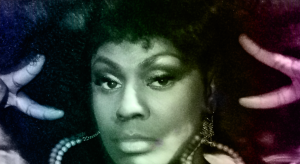 and personal artistic expression. However, increasingly I use music as a more purposeful tool of empowerment and peacebuilding for a global audience. Throughout my artistic development, I have learned from the lyrics of a musical lineage that serves as the soundtrack to my life. These artists and their songs are the inspiration behind the teaching artist component of my craft today.
and personal artistic expression. However, increasingly I use music as a more purposeful tool of empowerment and peacebuilding for a global audience. Throughout my artistic development, I have learned from the lyrics of a musical lineage that serves as the soundtrack to my life. These artists and their songs are the inspiration behind the teaching artist component of my craft today.
